Macro Calculator
This free, easy-to-use macro calculator gives you your optimal macronutrients and calories. It’s a weight loss or muscle gain calculator for both women and men.
Combine with macro counting or flexible dieting to reach your goals faster.
How to get leaner and stronger?
Our comprehensive macro-based fat loss program shows you how. Learn more
How do macros work?
The foods we eat are made up of three macros (macronutrients). These are carbohydrates (carbs), protein, and fat.
Chicken is high in protein but has no carbs; rice is high in carbs but has very little fat or protein. The three macronutrients provide the body with energy and raw materials for growth and repair.
By calculating the appropriate daily calorie amount for you, we can then break this down into the best macronutrient ratios to achieve weight loss.
Basic steps for macro counting
- Enter details into the calculator
Make sure to choose the correct goal. - Take note of your calories and macros
These will be the targets you are aiming for each day. - Track your macros
Use an app or pre-plan your meals. - Measure results
Don’t use basic weight scales.
Use proper body composition scales (we recommend Renpho) to measure fat and muscle mass changes.
What is a good macro ratio for fat loss or muscle gain?
Your macros should be based on your Total Daily Energy Expenditure (TDEE) and goals.
The calculator defaults to the best macro ratio proven to work for most people.
This ratio is:
- 30% fat
- Protein is 0.65 grams per pound of body weight,
- The remainder is carbs.
Depending on your goal, this will be either a calorie deficit or a surplus.
You can go further and make more adjustments: Perhaps you’re an extreme endomorph and do better with fewer carbs. Or perhaps you have one kidney and need to eat less protein.
You can fine-tune your results with a bit of math. See how to change your macros here.
What is a good protein ratio?
Rather than a percentage, proteins are based on your body weight. Our calculator has three settings:
- Moderate adjusts the ratio to 0.65 grams per pound of body weight.
This is appropriate for sedentary individuals or people with higher body fat percentages. - High is for active people with moderate strength training and an average body fat percentage.
- Maximum will set the ratio to 1 gram per pound.
This amount is good for bodybuilding and gaining muscle mass. You must be doing intense training.
Find out how to fine-tune your protein ratios when counting macros
Fat macro ratio
Set fat at 30% of daily energy expenditure.
Most people do very well with this amount of fat. See more about choosing the best macro fats. Because of high-fat diets like keto, many people are now eating more fat than they need to.
Carbohydrate macro ratio
Once you’ve calculated protein and fat, the remainder of your daily calories should be from carbohydrates.
Carbs fuel your body and workouts – and are the body’s preferred energy source.
If you are coming from a low-carb background, this may seem high. However, according to respected nutritional research, this is a moderate amount of carbs.
If you are eating according to your TDEE, the notion that carbs cause weight gain or stop fat loss is incorrect.
Using as a Calorie Deficit Calculator
As a weight loss calculator, this tool establishes a safe calorie deficit only.
The Lose option puts you in a 20% calorie deficit, promoting safe, steady weight loss.
The best macro ratio for body recomposition
If you want to recompose your body (lose fat and gain muscle simultaneously), then use the body recomposition calculator.
Macro ratio for maintenance
The Maintain button shows you the macro levels to maintain your current weight.
This is great if you have lost weight and don’t want to gain it back.
Macro ratio for muscle gain
The Gain button puts you in a 20% calorie surplus.
The macro breakdown is designed to build muscle fast in conjunction and must be combined with a comprehensive weight training program.
Underweight people can also use it.
TIP: Try starting with the maintenance goal and gradually increasing calories if you want lean muscle gains.
Calculating macros using your body fat percentage
The calculator uses your body weight to determine calories and macros.
However, you can obtain superior results by using your body fat percentage. The calculator allows you to choose which method: Normal for body weight, Lean Mass for fat percentage.
When to choose the Lean Mass Formula
If you are lean (have a low body fat percentage), choose the Lean Mass formula and enter your body fat %.
If you are classified as obese and have a lot of weight to lose, the lean mass formula is superior. You can read more about macro counting and obesity.
Help? Calculate your ideal body weight or get an assessment of your body fat percentage.
Why the difference? Muscle cells burn more calories than fat cells, so the more accurately we measure this, the better your results will be.
How to calculate macros per meal
You can break this down into meals once you’ve calculated your daily macros in the calculator.
Choose from 2 to 6 meals daily to see the macro ratio you can track for each meal. For some people, this is easier, but for others, this is too much detail.
Do what works for you.
Meal Plans
See a 5-day macro-based meal plan. It includes three meals and two snacks per day.
Macro calculator activity level settings
A higher activity level means a higher daily calorie goal.
For example – if you maintain your weight at 2,000 calories per day, adding vigorous daily exercise means you need more calories to maintain your weight.
If you are sedentary and trying to lose weight, adding exercise will increase your daily calorie goal.
The idea seems counter-intuitive, but more energy is required to fuel your workouts. More workouts lead to increasing metabolism; therefore, more fat is burned!
Undereating is one of the leading causes of the weight loss plateau.
So many of our clients previously “hit the wall” with dieting. They would continually reduce calories, stop losing fat, and gain weight when they eat a little more.
Macro counting defeats this by prescribing the right food and calorie levels.
Which activity level do I choose?
- Sedentary: Just regular everyday activity like a bit of walking, a couple of flights of stairs, eating, etc.
- Light: Any activity that burns 200-400 calories (females) or 250-500 calories (males) over your sedentary amount.
- Moderate: Any activity that burns 400-650 calories (females) or 500-800 calories (males) more than your sedentary amount.
- Extreme: Any activity that burns more than 650 calories (females) or more than 800 calories (males) in addition to your sedentary amount.
Other options for determining your calorie burn
- Use our calories burned calculator – it accurately assesses over 380 activities.
- Use a fitness tracker – like a Fitbit or Apple Watch (note that they can overestimate calorie burn).
- Use a suitable app – like MapMyFitness
Why should I eat more when I exercise more?
High physical activity not fueled with enough calories will lead to muscle catabolism (breakdown of muscle fiber).
This lack of nutrition could stall your weight loss, so eat up if you love to exercise!
I’ve got my macros – now what?
Once you’ve identified your target daily macros, you must determine the macros in all your foods.
By tracking them daily, you can reach your recommended macro targets that encourage fat loss, muscle gain, or whatever your goal may be.
You can learn more about the macro counting system and the flexible dieting philosophy. Many people use an app like Myfitnesspal to track macros.
For more specifics on what to eat – see a sample macro meal plan or a list of macros for familiar foods.
View article sourcesSources
- Mifflin, M. D., St Jeor, S. T., Hill, L. A., Scott, B. J., Daugherty, S. A., & Koh, Y. O. (1990). A new predictive equation for resting energy expenditure in healthy individuals. The American Journal of Clinical Nutrition, 51 (2), 241-247. Link
- McArdle, W. D., Katch, F. I., & Katch, V. L. (2010). Exercise physiology: nutrition, energy, and human performance. Lippincott Williams & Wilkins. Link
- Jequier, E. (1994). Carbohydrates as a source of energy. The American journal of clinical nutrition, 59(3), 682S-685S.
- Lemon, P. W., Tarnopolsky, M. A., MacDougall, J. D., & Atkinson, S. A. (1992). Protein requirements and muscle mass/strength changes during intensive training in novice bodybuilders. Journal of Applied Physiology, 73(2), 767-775. study abstract link
- Grundy, S. M. (1999). The optimal ratio of fat-to-carbohydrate in the diet. Annual review of nutrition, 19(1), 325-341. abstract
- Conlin, L.A., Aguilar, D.T., Rogers, G.E. et al. Flexible vs. rigid dieting in resistance-trained individuals seeking to optimize their physiques: A randomized controlled trial. J Int Soc Sports Nutr 18, 52 (2021). https://doi.org/10.1186/s12970-021-00452-2
2,104 Comments


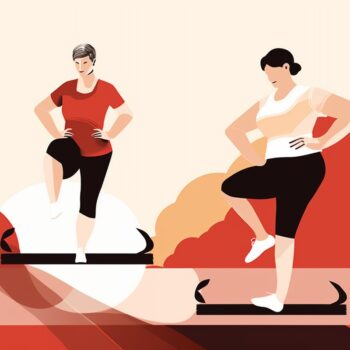 Menopause Macro Calculator
Menopause Macro Calculator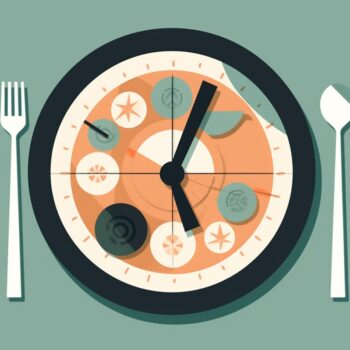 Intermittent Fasting Calculator
Intermittent Fasting Calculator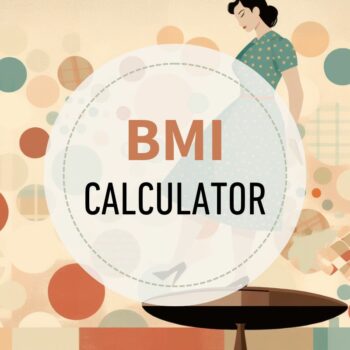 BMI Calculator
BMI Calculator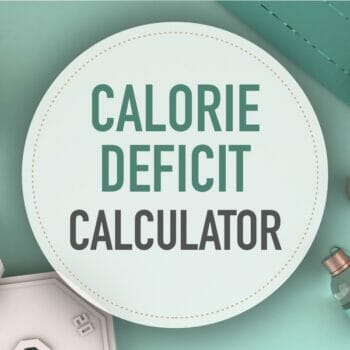 Calorie Deficit Calculator
Calorie Deficit Calculator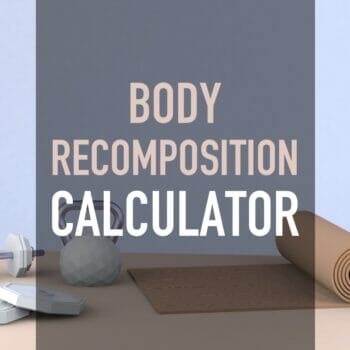 Body Recomposition Calculator
Body Recomposition Calculator
Hey Ted, I am 190 lbs and am trying to lose weight to 180 lbs but also gain muscle. What is the best way to approach this with macros? Should I gain/high protein first to add the muscle then cut/lose? Thanks!
Hey TD, I recently published an article about this very topic. Have a read. https://healthyeater.com/gain-muscle-lose-fat-iifym All the best!
Hey folks, please use the comments below to ask questions about the calculator functionality only. For flexible dieting advice or coaching, please see my new book which also offers access to a members only forum where I’ll be standing by to answer your questions and coach you along the way. Thanks for supporting our website.
Hey Ted. Hope this msg finds you doing well. I have a question: I am 32 years old, 86Kg and 1.86m. When I calculated my macros here in the website, it suggested me about 1800 cal/day. I set it to high protein level because I do lifting 5 times a week as well as hiit in the treadmill in the end of the training day. My currently body fat % is about 18%, and I want to bring it down to 9-10%. Although I want to lose fat, in the end of this process, I want to weight more or less the same I weight right now (around 86Kg). Nevertheless, I heard that for losing fat, I will have to lose weight too. So my question is, using mytinesspal I have to set a ‘weight goal’, thus I wonder which weight should I set it to, in order to lose fat and accomplish my fat % goal at the same time as keeping my currently weight?
Do I have to first have a diet for losing weight and then switch it to another one for gain weight?
Ah, something I forgot to mentioned on my question above; When calculated the macros, I set it to ‘sedentary’, because although I do lifting and hiit, as described above, I spend most of the day inside my office, working in front a computer. Is that ok?
Hi Marcelo, I’m great thanks, glad you found us. Here’s a couple articles that will help.
https://healthyeater.com/iifym-myfitnesspal-tutorial
https://healthyeater.com/gain-muscle-lose-fat-iifym
This helps you set everything up in MFP. Basically, you can set the goal to one pound a week and you’ll have to choose a lower goal weight or MFP will automatically start giving you more calories. It’s fine that you chose sedentary but you then need to track the calories you burn on your exercise days and eat those calories back. This is also explained in the tutorial that I linked to above. The second article talks about losing fat and gaining muscle with flexible dieting. All the best!
Hi Ted, thanks for your reply. Almost everything is clear now … I just didn’t quite understand the part you wrote “you then need to track the calories you burn on your exercise days and eat those calories back”, because when I manually inserted my daily calorie needs into MFP, this amount of calorie was calculated taking into account an estimation of the calorie burn during the 5 times/week exercise I do (I have to insert this info into the calories calculator). Therefore, I wasn’t expecting to add it back on. Can you clarify this sentence of yours.
Cheers!
Right, MFP does this for you when you set it up to track exercise, it adds those calories to your totals, so essentially, you are “eating them back.”
Hi Ted, I am confused as to how much protein I should be using and the Caloric Intake.
Goals: To gain muscle while keeping off fat. Ideal weight would be 150.
Current weight: 135. I am 5’7″.
Activity level? Not sure what you’d consider it…. I workout Monday through Saturday for approximately 2 to 2 1/2 hours. I run approximately 20 miles a week as well as weight lift. I currently take Optimum Nutrition Whey Protein Supplement as well. PLEASE HELP!
P.S: How do i ensure that Myfitnesspal is not tracking my exercises w/o paying for their premium subscription?
Hi Devion, It seems to me that your initial settings should be extremely active, gain, high protein. After a few weeks, if you feel like you are gaining fat cut back your carb and fat grams, but not your protein.
Under settings in MFP you can turn of tracking and enter the numbers we give you.. follow our guide here.
https://healthyeater.com/iifym-myfitnesspal-tutorial
Hello! I am confused about the calorie total. Since TDEE includes activity level, does that mean I shouldn’t take into account my calories burned during daily tracking? I am moderately active and I should be eating roughly 1500. so if I workout and burn 500 does that put my total at 2000 so my net remains at 1500?…..or if I put it this way: the number the calculator gives me after I select “moderately active” and “lose” should be my net calories for a day, correct? or….
Hi Healthy, The calculator is already factoring in your exercise so you simply eat according to the TDEE and Macros it displays based on your settings.
Hi! I’m trying to calculate macros for a family member. I have done the math and have used your calculator. The numbers are not matching up exactly. Is there a reason for this? When I do the math it comes out to 1,744 and the calculator comes out to 1,739. Does the little difference matter? I just want to be sure I’m doing this right. THANK YOU
Great calculator. Very helpful. Macros can be very confusing, especially for those just starting out. A calculator is life saver.
Hi Ted! First I would like to take the time out to commend you for this awesome forum/article that is really realistic and does not require deprivation as many diets do. With that being said, I am a bit confused being that I am using MyFitness pal which calculates that I should be eating 1200 cals at sedentary level(i have been following this for almost 3 weeks and have lost 4 lbs which is what i set my goal as, 2 lbs weekly)but the macro cal states 1499 at sedentary level. Because the macros are based off of the 1499 cal intake but fitnesspal intake is 1200, I am lost on what my macro intake should be being that I am intaking 1200 cals at sedentary and around 1350-1400 with 20 mins of aerobics. Please help!! ☺
Hi Grade A, Thanks and I’m glad you are finding our website helpful. MyFitnessPal does not use the same formula as us since you selected “2 pounds per week”. It is putting you at a more drastic calorie deficit than our calculator does. A goal of 1 pound a week is more consistent with what our results show and is better long-term because it will be easier to adhere to. Anyway, if you want to do flexible dieting with MFP, I suggest that you follow my tutorial so that you can set everything up on MFP so it’s congruent with the flexible dieting guidelines. https://healthyeater.com/iifym-myfitnesspal-tutorial All the best and keep up the great work!
Hello Ted! I have a couple of questions: 1. When I have reached my weight loss desire do I just switch right to maintenance calories with the same amount of exercise? Would this sudden switch of increased calories cause me to gain weight? 2. Also at maintenance can I increase muscle but not as a body builder but as a normal lean female or am I looking at it all wrong? 3. I read alot about the word “cutting” but isn’t this the same as losing weight? 4. Lastly I notice you give options for macros: low, normal, high, in what instances would you choose low or high as opposed to normal? Thanks so much in advanced. This has worked well for me and I also incorporated intermittent fasting with this and it helps keep it cut and dry for me and it keeps me full and not hungry at all.
Hi Cheryl, sure, no worries. 1. yes, switch to maintenance and no, your body should be only taking in close to what it expends during the day so no weight loss will be experienced. 2. Muscle mass can be increased with proper weight training techniques. 3. Cutting is different than weight loss and is a term bodybuilders use when they want to remove the layer of fat under the skin to reveal muscles usually for competition. It involves very low calories and a very low fat diet. 4. low, normal, and high is only referring to protein level. For weight loss normal is fine. when you start building muscle you may want to switch to high. 5. Your activity levels are based on daily activity. Total Daily Energy Expenditure (TDEE). You would be lightly active because you are doing more than just everyday normal activities. Keep up the great work!
Ok great advice! I was more so wondering would the maintenance level cause me to gain some weight because of the calorie and carb increase until my body balance back out from the change because if im eating at a deficit now wouldn’t the increase seem like a slight surplus at first until my body realizes it is my maintenance? Hope that doesn’t sound to crazy lol. As far as cutting I am interested in losing the fat around my stomach and waist line but not necessarily a 6 pack, so can I achieve this with normal weight loss? And lastly after you have a cheat day every once in a while is it wise to eat at sedentary for a couple of days out just to balance it or just continue back up with my lightly active routine? Thank you so much for your patience and always replying. I know it can be a lot of work but it definitely doesn’t go unnoticed and I appreciate it a GREAT deal! ! Also if you are a role model in someone’s life Happy late Father’s Day! !
Thanks Cheryl 🙂 I don’t think it will cause problems but if you want to you can increase your calories gradually even if it’s just better for your own peace of mind. As far as fat loss, it comes off, but when and where can be tricky. My experience is that midsection fat is often the last to go, which is why many get frustrated and give up. Just be patient and consistent here and it will happen. I don’t recommend cheat days, but no one is perfect 🙂 Just return to your normal schedule the following day. If I know I’m going to a party or out to eat, I plan earlier in the day to eat less so these high calorie meals or functions fit within my daily macros. I think this is better than just eating whatever and chalking it up to a cheat day. All the best and keep us posted. 🙂
I have two questions for you, Ted.
1. I crossfit 3x a week. This includes the weight lifting session with metcons. One day a week I go all out on a metcon and the other two days I go at a 70 to 80% effort to train my body to burn fat, as prescribed by a nutritionist,based on a met test. Should I keep my macro count in the moderate or high range on workout days? Should I keep the macro count in the sedentary range on non-workout days?
2. I’ve read that eating up to 50% carbs is good for athletes but maybe not so good for longevity. What is your take on this?
Thanks!
Also, I am not over weight, maybe under weight at 6′, medium build, and weigh 162lbs. Trying to lose fat at the waist and gain muscle mass.
Hi David, For fat loss and muscle gain at the same time, I’m a firm believer in eating according to how much activity you are doing on any given day. Just make sure that your calories deficits aren’t too great as you are already a bit underweight, plus you need to have enough resources for muscle growth. I would say 50% carbs can be useful on big training days, but probably not for rest days.
Thanks Ted!
If you were in my shoes, would you try to GAIN more muscle by lifting and increasing the volume of food, hoping that this would help reduce the body fat around the waist, or just do what what I mentioned in the prior comment (try to gain muscle and reduce body fat)?
These are both methods that work but traditional bulking stages will put on fat, then you’ll have to cut which is no fun at all. (very restrictive) That’s why flexible dieting is great. you get to eat and lose fat and gain at the same time. It’s just a slower process and you have to be patient, but I feel it’s healthier and more doable in the long run. Have you read my story? https://healthyeater.com/personal-experience-with-flexible-dieting
Yes I did read your story. Enjoyed it too.
Ted, this is day 18 for me on the flex diet plan. I have gained 6-7lbs. I am enjoying this plan from the palette perspective, but, my stomach is bigger, maybe from the 1.5 to 2 lbs of sweet potatoes I eat each day to get a fair amount of carbs. I am eating berries, banana chips too for carbs. Hard to tell if I am gaining body fat in the mid section. Macros are protein 144g, carbs 157g, and fat 62g for a total of about 1700 calories. I should be eating more, according to my daily TDEE, but feel full around 1800 cals.
Question, should I eat more in line with my TDEE, even though my stomach appears very full after eating and I feel satisfied? I am under weight too, but, am puzzled why my body doesn’t digest the food faster, which leaves me with a full stomach look. Again, I am trying to lose body fat around the waist and gain muscle.
Thanks for any ideas, Ted!
Hi David, Great job on your weight gain. You really should be close to your TDEE, but also go with how you feel and the progress you are making. Have you read my latest article on this subject? https://healthyeater.com/gain-muscle-lose-fat-iifym
Thank you for such a great tool. Looking forward to getting started.
you’re welcome! All the best getting started and be sure to check out our other resources regarding flexible dieting.
Hey!
Im trying to figure out my macros and I had a quick question; as a chef what should I put my activity level at? I exercise 3-6 days depending on the week (pole dancing 1-2 days, cardio, gym 2-3. PT 1day), but my PT has always suggested I set it to sedentary to lose weight quicker – is this what I should do now as well?
I’m 23, 101.4kg, 168cm wanting to lose 36kg
Hi Monique, I would think that you would be at least moderate. You need to be eating enough to support your demanding job, exercise and your metabolism, plus create a HEALTHY calorie deficit. Your PT isn’t giving great advice. Here’s a good article that explains this further. https://healthyeater.com/eat-to-lose-weight